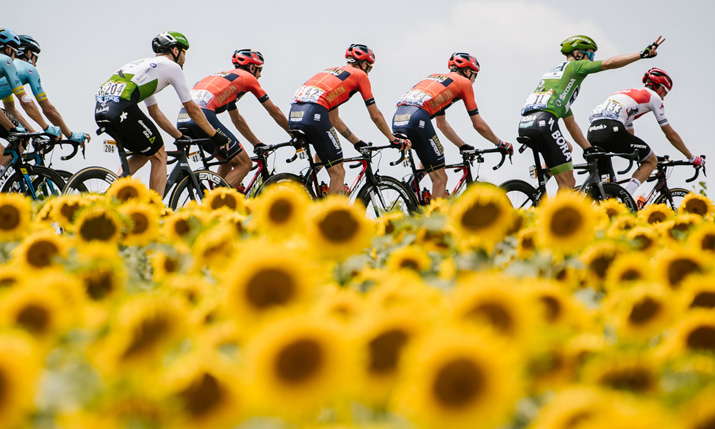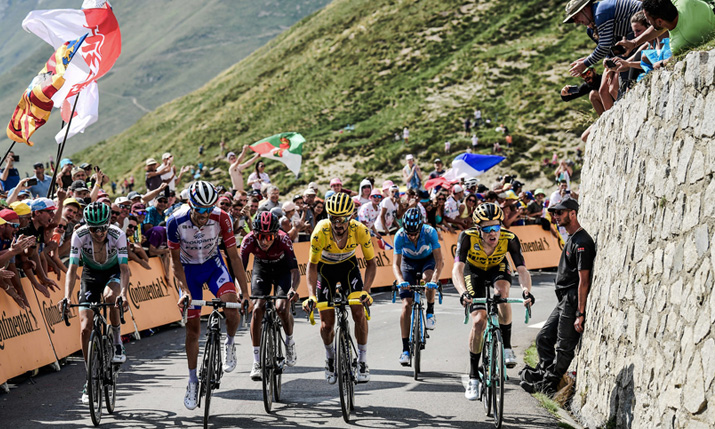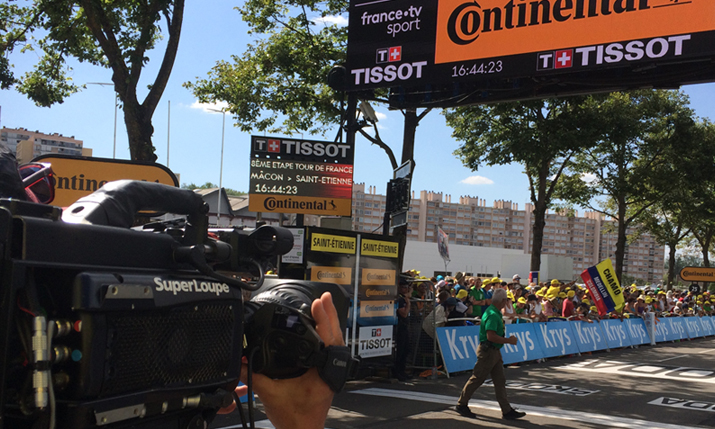Readying for the hors categorie: Tour de France remains on track despite coronavirus challenges
 The 107th Tour de France is set to make its grand départ on 29 August in Nice, arriving in Paris on 20 September.
The 107th Tour de France is set to make its grand départ on 29 August in Nice, arriving in Paris on 20 September.
This year’s Tour is a truly French affair, covering 3,470 kilometres including five mountain ranges in France and involving a total of 21 stages.
For broadcasters, this famous cycling contest is already one of the most challenging sporting events to cover because of its sheer geographic scale. This year, the situation has been further complicated by the COVID-19 pandemic, which has forced organisers and broadcasters to adapt some of their working methods to comply with France’s social distancing requirements.
Indeed, there was some doubt about whether or not the Tour de France would take place at all. Although it has been postponed from its original schedule of 27 June to 19 July, the organisers are cautiously confident that the event will be going ahead.
According to Bruno Gallais, head of the RF department at Euromedia, all those involved are now working towards the start on 29 August and preparations are at an advanced stage.
Testing technical set up
Indeed, Euromedia, host broadcaster France Télévisions and race organiser Amaury Sports Organisation (ASO) have already been able to test changes to the technical set up at previous races, including the traditional pre-Tour race, the Critérium du Dauphiné.
As with previous tours, Euromedia is working alongside France Télévisions and is responsible for providing all the RF facilities for the international feed as well as the French public broadcaster’s unilateral feed of the ASO race. The race will be delivered to 190 countries and broadcast on 100 channels, of which 60 are live.
Gallais is managing around 85 people involved in producing the live feed. Cameras installed on helicopters and motorcycles follow the cyclists throughout the 21 stages. The signals from the cameras are relayed to two pressurised planes, which then send the signal back to outside broadcast (OB) vans for both the international and unilateral feeds.
“ASO manages the international distribution of the signal to all broadcasters outside of France,” says Gallais.
“The entire team will be tested fewer than five days before the start, while regular temperature checks will be carried out throughout the event. It will also be important for team members to wear masks.”
Overall, five camera motorcycles, eight commentator motorcycles, three helicopters (of which the third is a relay helicopter,) and 20 lightweight 4G cameras installed on the bicycles themselves will ensure that viewers will be able to see every twist and turn of the race.
“Each helicopter is equipped with two cameras,” states Gallais. “One is a wide-angled camera for beauty shots and one has a long lens for the race itself.”
The motorbikes will be carrying LDX 86N RF cameras from Grass Valley, while Cineflex V14 systems will be installed on the helicopters. The HEVC-based RF links are transmitted to Euromedia’s C42 OB van using tools from its Livetools Technology unit, including HD-Runner and Fusion transmitters and Colibri interface for the Grass Valley cameras.
 Smart Connected Sensor (SMACS) technology will also be installed on the bikes, which allows a wealth of information about cyclists’ performance to be used both on and off-screen.
Smart Connected Sensor (SMACS) technology will also be installed on the bikes, which allows a wealth of information about cyclists’ performance to be used both on and off-screen.
According to Gallais, this is the first outing for Livetools and HEVC coding at the Tour de France, although he said 4K HDR coverage will not be provided this year. Euromedia has already trialled 4K HDR at French one-day classic cycling race Paris-Tours in October 2019, and Gallais indicated that Euromedia will be moving towards a wider use of 4K HDR at future events.
Health and safety
As explained by Gallais, his team will have to take some measures this year to protect themselves and others from COVID-19. “The entire team will be tested fewer than five days before the start, while regular temperature checks will be carried out throughout the event. It will also be important for team members to wear masks,” he says.
The number of accredited people has been kept to a strict minimum, particularly in the OB vans. Gallais says a replacement plan is also in place in case key technicians fall ill, although back up teams are always used as part of a rotation strategy for the Tour de France because it is such a long race.
Gallais notes that it is difficult to reduce Euromedia’s presence on-site because it is responsible for producing the live international signal. However, in many ways the Tour is more suited to such a challenge than, say, a large football match or the Olympic Games, because the RF team is naturally spread out along the route.
The main change for the company this year is that its London-based subsidiary, Broadcast RF, will remotely manage the server for the images gathered by the 4G cameras.
Managing changes
In many ways, France Télévisions will experience the biggest changes this year. While the broadcaster has confirmed it will have two OB trucks on site as initially planned, Gallais says France Télévisions’s unilateral OB van will not be on the finish line for the first time in the history of the event. Instead, the unilateral signal will be managed from the broadcaster’s headquarters in Paris. Only the international OB van will be present at the finish line.
Meanwhile, France Télévisions has greatly reduced the number of people on site, with a 30% reduction in staff on location for the duration of the event. It says that each day there will be 100 people in the technical area of the rapidly moving Tour de France circus, carrying out the international signal.

Superloupe Sportcam ready to capture the arrival of the Tour de France racers at the end of each stage of the race in 2019. Digital Video Sud (DVS), part of Euro Media Group, developed Superloupe to be used exclusively on motorbikes.
There will also be 50 people based in Paris packaging the final France Télévisions production. A spokesperson for France Télévisions said the host broadcaster had agreed with ASO to manage France Télévisions’ coverage from its studios in Paris, including the Vélo Club et Le Journal du Tour programmes. That means all commentators, namely Alexandre Pasteur, Marion Rousse, Laurent Jalabert and Franck Ferrand, will remain in Paris.
Journalist Thierry Adam and consultant Thomas Voeckler will occupy two of the eight commentator motorcycles, while Rodolphe Gaudin will conduct interviews with the riders at the start of the race and Nicolas Geay at the finish.
The Tour also has a new director this year in the form of Anthony Forestier, who takes over from Jean-Maurice Ooghe.
It is set to be an exciting event if all goes to plan, and COVID-19 does not further complicate the organisation of the event. Nevertheless, the pandemic has already caused some potential new innovations to be put on hold, as Gallais somewhat ruefully explained.
“We have a lot of data from the SMACS trackers that can be used for virtual reality applications,” he said, “but not this year.”
Perhaps the 2021 edition of the Tour de France will bring some innovative new mixed reality experiences. This year, the fact that the event is taking place at all is probably more than enough for now.
The 2020 Tour de France will take place 29 August 2020 to 20 September 2020.
107th Tour de France: a few facts
- 21 Stages: Nine flat stages; Three hilly stages; Eight mountain stages with mountain-top finishes (Orcières-Merlette, Puy Mary, Grand Colombier, Méribel Col de la Loze);
- One individual time-trial stage
- Two rest days
- Start: Nice Moyen Pays, Saturday, 29th August 2020
- Finish: Paris Champs-Élysées, Sunday, 20th September 2020
- Total distance: 3,470 kilometres in France
